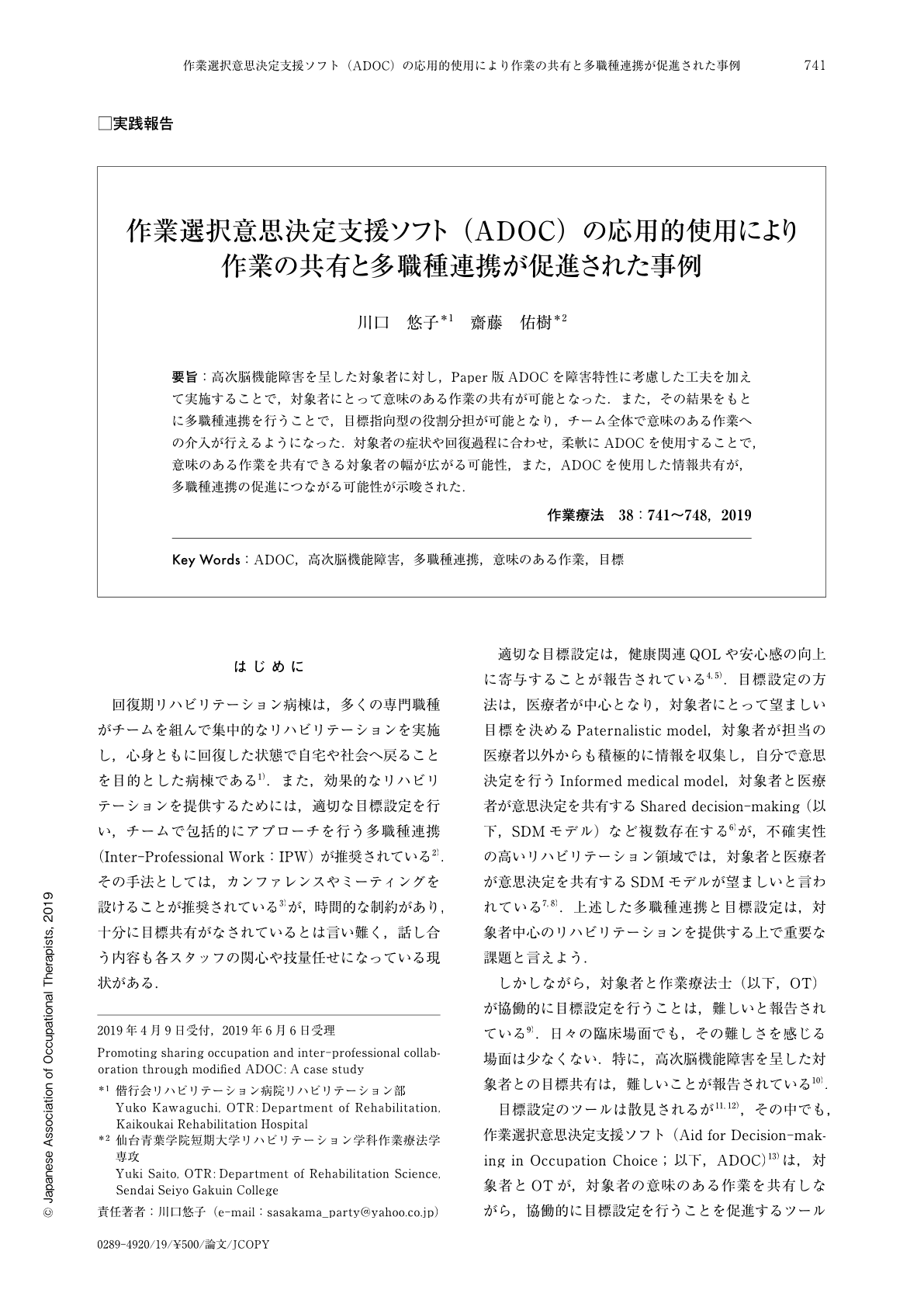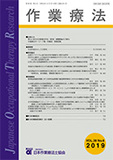Japanese
English
- 販売していません
- Abstract 文献概要
- 1ページ目 Look Inside
- 参考文献 Reference
- サイト内被引用 Cited by
要旨:高次脳機能障害を呈した対象者に対し,Paper版ADOCを障害特性に考慮した工夫を加えて実施することで,対象者にとって意味のある作業の共有が可能となった.また,その結果をもとに多職種連携を行うことで,目標指向型の役割分担が可能となり,チーム全体で意味のある作業への介入が行えるようになった.対象者の症状や回復過程に合わせ,柔軟にADOCを使用することで,意味のある作業を共有できる対象者の幅が広がる可能性,また,ADOCを使用した情報共有が,多職種連携の促進につながる可能性が示唆された.
After devising how to use ADOC, a client with higher brain dysfunction and an occupational therapist could share meaningful occupations. By sharing the meaningful occupations revealed in the interview using ADOC, the team was able to share the role that focused on the meaningful occupations. By devising methods in how to use ADOC in accordance with the client's symptoms, ADOC may be effective for clients who have difficulty communicating, such as those with aphasia, dementia, and attention disorder. Further it may also be effective for Inter-Professional Work that focuses on client's meaningful occupations.

Copyright © 2019, Japanese Association of Occupational Therapists. All rights reserved.


